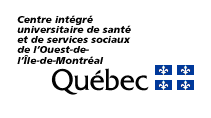2015-07-27
Between May 19 and September 30 of each year, the Douglas Institute prepares in case of a high or extreme heat wave, by instating a level of « Seasonal » Watch. During this level, the Douglas Institute, in collaboration with the Direction de santé publique de Montréal, transmits to its workers the following information.
What is a period of high or extreme heat?
High Heat : Environment Canada emits a High Heat and Humidity Warning when temperatures exceed 30°C and a humidex factor that exceeds a value of 40 (temperature that is felt because of the humidity)
Extrême Heat : When the following exceptional meteorological conditions are meet, the situation can be qualified as being an extreme heat wave: three consecutive days or more with a weighted minimum temperature average of ≥ 20 ºC and a weighted maximum temperature average of ≥ 33 ºC or two consecutive nights with minimum temperatures of ≥ 25 ºC.
In Montreal, a study demonstrated that mortality was significantly increased when extreme heat criteria were meet. In July 2010, a heat wave covered the Montreal area, with an average temperature of 33.9°C. This heat wave was associated with the deaths of 106 people, including 31 people suffering from mental health or addiction problems, of which 5 people were followed in the community by the Douglas Institute.
Who is the population at risk?
During the upcoming season, periods of high or extreme heat waves are possible. Consequently, populations at risk are:
- People suffering from neurological diseases (including Parkinson's, Alzheimer's, Multiple sclerosis, etc.)
- People suffering from mental health disorders (in particular schizophrenia, addiction or alcoholism).
- People suffering from chronic physical diseases (including obesity, diabetes, cancer, cardiovascular, respiratory, renal or liver diseases)
- People over 65 years of age
- People living alone and in loss of independence or mobility.
- How to recognise heat related health problems?
If a patient presents the following symptoms, it may represent a severe health problem related to the heat. The symptomatic person should consult a doctor as soon as possible. If you are on the location of the Douglas Institute, signal a CODE BLUE, and if you are in the community, call 9-1-1:
- Fever ≥ 40 °C (oral)
- Confusion
- Delirious or hallucinations
- Red and dry skin
- Difficulties breathing
- Heart arrhythmia *
What to do?
Outpatient Clinics
Primary practitioners in outpatient clinics must screen patients at risk during extreme heat waves (consult the checklist) and register the intervention priority level in Clinibase.
During appointments during the spring and summer, primary practitioners must remind patients of the recommendations presented in the information card "THERE IS A HEAT WAVE" and verify their comprehension and judgement:
- Drink water or juice (at least 4 glasses a day, don't wait until you're thirsty);
- Go to a cool or air-conditioned place for 2 hours or more;
- Relax as much as possible and reduce physical efforts;
- Wear lightweight clothing;
- Take many showers a day or put a moist cloth on your skin;
- Call your friends and loved ones every day (for patients followed by external services).
Residential Resources
Resource workers must verify the safety of residential resources, to make sure that preventative measures are in place and at least one common area is air-conditioned and accessible to all residents.
Private Resources
Any practitioner who witnesses situations presenting a risk to patient should advise their superior.
Inpatient Units and Patient Environment:
If there are air-conditioning malfunctions, please send a work order to the Technical Services Directorate and your order will be treated as a priority.
Water distribution
Make sure that water bottle inventories are complete for the summer.


